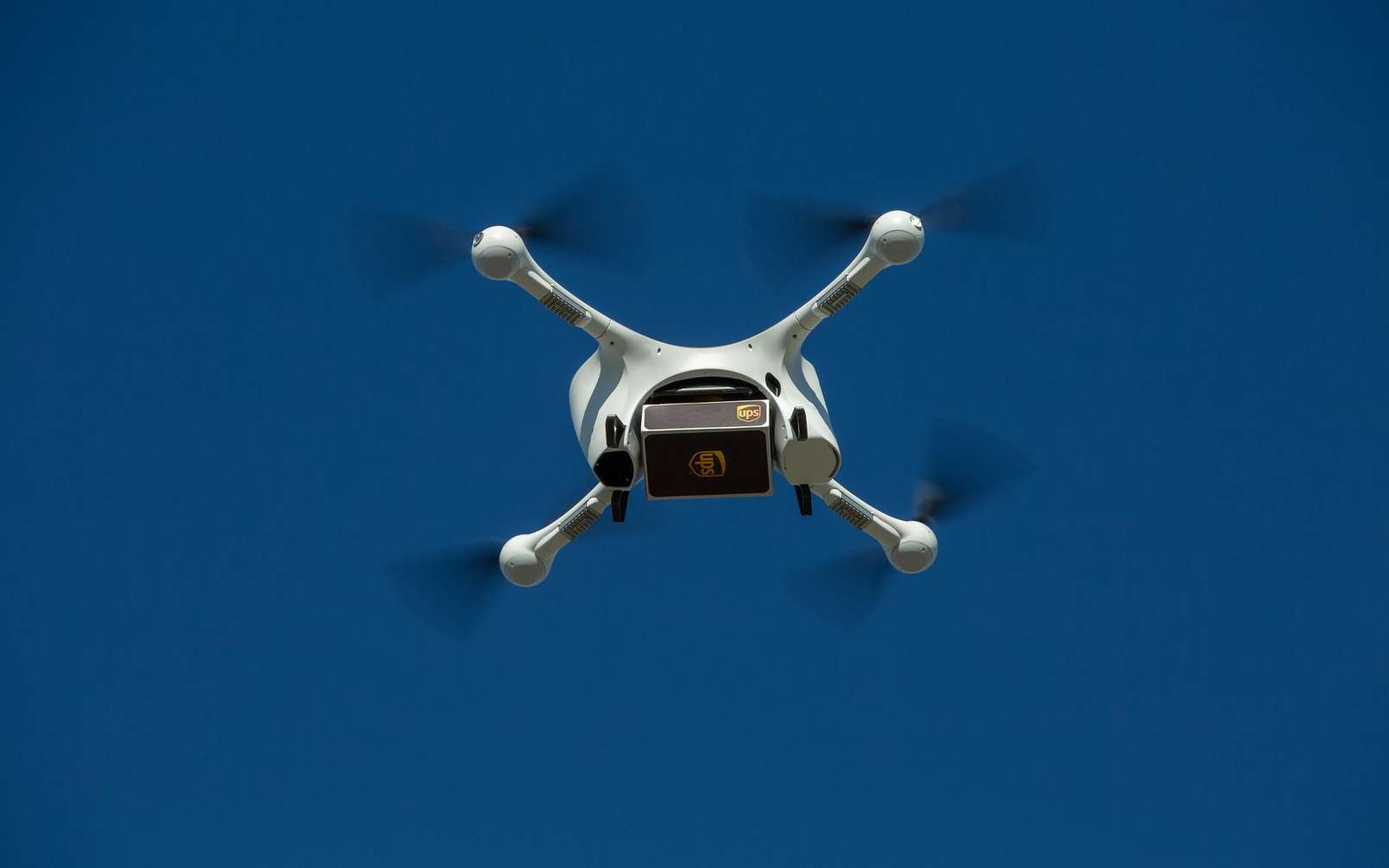A study by the German University Martin Luther concludes that delivery drones would consume 10 times more energy than electric vans in dense urban areas.
The pandemic of coronavirus and containment measures under them will they served as a launching pad for the development of delivery by drone ? If it is probably still too early to say, one thing is certain, the health crisis has been an opportunity for some players in this very embryonic market to demonstrate the effectiveness of their solution in such circumstances.
Wing, a subsidiary of Alphabet which operates a drone delivery service in Virginia (United States) and Australia, indicated that its activity had doubled since the introduction of containment. Earlier this week, UPS and CVS Health Corporation announced that they would deliver medicines by drone to residents of The Villages, a secure subdivision reserved for retirees over 55 years of age.
And the movement is also starting in Europe. Recently, the European Aviation Safety Agency ( EASA ) submitted to the European Commission its proposal for a regulatory framework intended to make these drone delivery services coexist with other air and land activities in our urban environments.
Amazon , Alibaba, DHL, Uber and La Posteare also in the running to develop these services that are praised for their speed and low cost. But what about their energy efficiency compared to existing solutions? This is precisely the question asked by Professor Thomas Kirschstein of Martin Luther University (Germany). Based on current delivery drone models , he performed simulations and compared their energy consumption to that of electric and diesel delivery utilities that are used in urban and rural areas.

The drone must deal with the wind
As a result, simulations carried out with Berlin as the benchmark urban area revealed that electric vans are by far the most energy efficient, followed by diesel vans which consume five times more energy under the same conditions and finally drones that are ten times more energy-consuming. Several factors explain this classification.
First of all, in town, traffic conditions require frequent stops and restarts, which benefits electric vehicles which consume less energy than diesel under these circumstances. A criterion which of course does not apply to the drone which must on the other hand deal with atmospheric conditions, and in particular the windwhich may require him to use more power to maintain his trajectory or maintain his hover when delivering the package.
The other criterion retained by the study which penalizes the energy efficiency of the drone is the population density. In the city, vans carry dozens or even hundreds of packages, with drop-off points often very close to each other, the routes being optimized to ensure maximum deliveries in a given time.
Under these conditions, the drone, which can only carry a single package whose weight cannot exceed a few kilos, is comparatively much more energy-consuming. ” Parcel carriers, for example, can stop and deliver multiple packages on foot if multiple customers receive deliveries on the same street. This is not possible for drones, as they can only deliver one package at a time. This increases their energy consumption, sometimes drastically, ”comments Professor Kirschstein.